October 29, 2025
Florence in Autumn and Winter: A Guide to the Renaissance City’s Quieter Seasons
Discover why fall and winter transform Florence into the ultimate destination for wine and food enthusiasts seeking authentic Tuscan experiences.
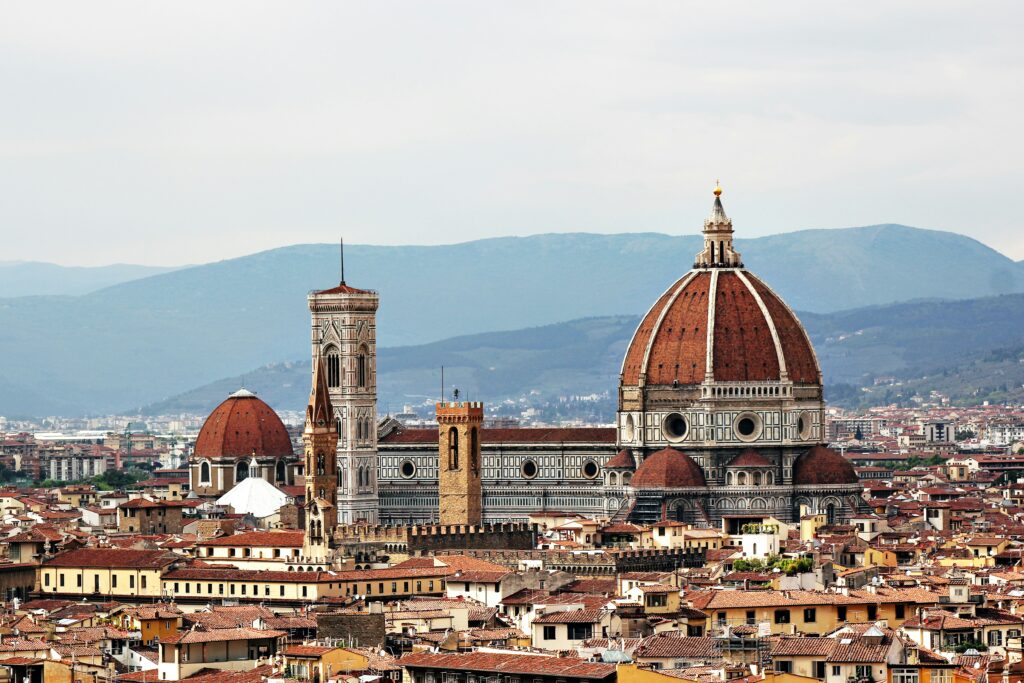
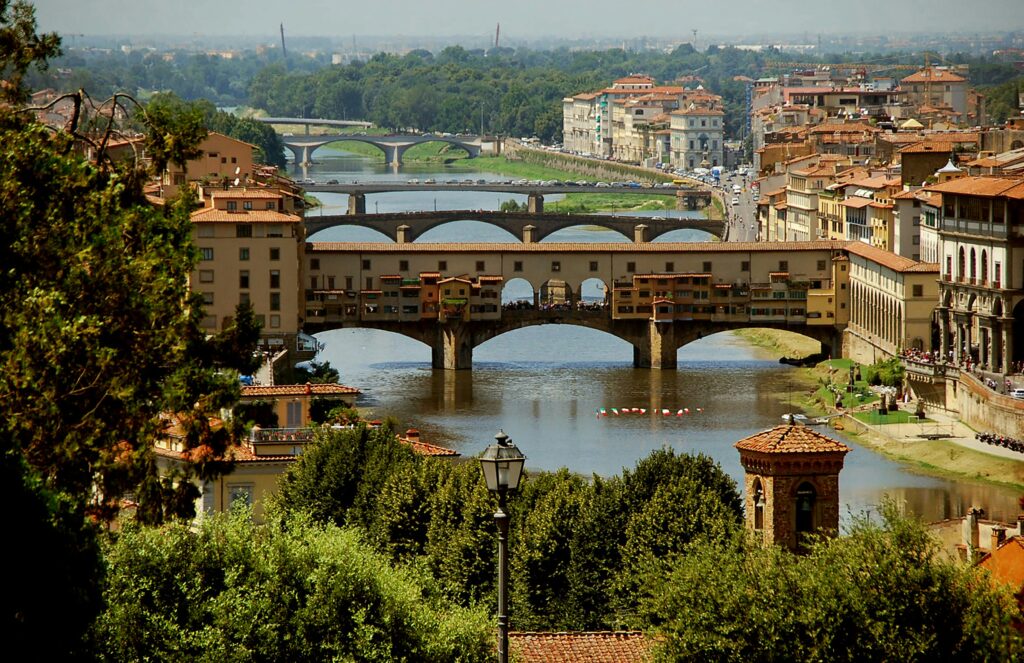
Images courtesty of Unsplash
Why Florence in Autumn and Winter is Extraordinary
While summer crowds jostle for space beneath the Duomo’s magnificent dome, autumn and winter reveal a different Florence that locals have cherished for centuries. The cooler months transform this Renaissance masterpiece into a city where authentic Tuscan culture takes center stage.
Olio Nuovo and Autumn’s Bounty
By November, the olive harvest begins, and Florence celebrates olio nuovo, which is the year’s first pressing of extra virgin olive oil. This vibrant, peppery green-gold elixir appears at sagre (food festivals) throughout the countryside, most famously served as fettunta: grilled Tuscan bread rubbed with garlic and drenched in the fresh oil. The intensity of flavor in this simple preparation is revelation itself.
Autumn also ushers in Tuscany’s most prized ingredients: porcini mushrooms emerge from forest floors, white truffles from San Miniato command premium prices at elegant restaurants, and chestnuts roast on nearly every street corner, filling the air with the classic winter aroma.
Winter’s Intimate Charm
Winter temperatures hover around 50-54°F during the day, which is chilly enough to appreciate Florence’s cozy trattorias and wine bars, but mild compared to much of Europe. November brings the most rainfall, but the city rewards winter visitors with shorter lines at the Uffizi and Accademia, and you can enjoy the Pitti Palace and Boboli Gardens with a warm drink afterward.
The festive season transforms Florence into a wonderland of Christmas markets. Piazza Santa Croce hosts the city’s largest market, where artisans sell handcrafted gifts while food vendors offer roasted chestnuts and vin brulé (mulled wine). The Green Line Festival illuminates major monuments, such as the Ponte Vecchio and Palazzo Vecchio, with colorful light installations, creating a magical evening walk along the Arno.
Perhaps most importantly, winter’s quieter pace allows deeper engagement with Florence’s treasures. You can linger before Michelangelo’s David without feeling rushed, savor a three-hour lunch without guilt, and genuinely connect with restaurant owners and shopkeepers who have more time to share their stories.
Seasonal Experiences and Events
Autumn and winter bring Florence’s calendar to life with festivals, celebrations, and cultural events that reveal the city’s vibrant traditions.
Autumn Celebrations
San Miniato White Truffle Festival (Last Three Weekends of November)
While technically held in the hilltown of San Miniato (about an hour from Florence), this festival celebrates Tuscany’s most prized autumn treasure: white truffles. The tartufo bianco market showcases these aromatic fungi at peak ripeness, and truffle hunters demonstrate traditional techniques with their specially trained dogs. Restaurants throughout San Miniato offer truffle-focused menus, and the festival includes wine pairings, cooking demonstrations, and truffle auctions. Many Florence-based tour companies offer day trips specifically for this festival.
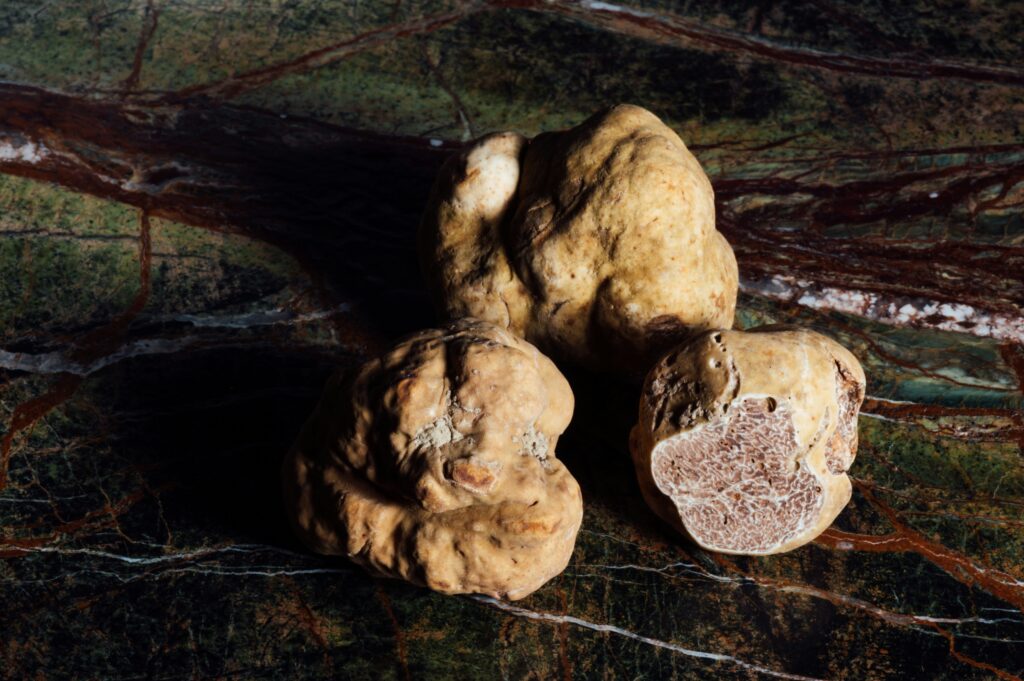
Image courtesy of Unsplash
Winter Festivities
Christmas Markets (Late November Through January 6)
Florence embraces the Christmas season with remarkable enthusiasm. The largest market fills Piazza Santa Croce with wooden chalets selling handcrafted gifts, ornaments, and holiday decorations. Artisans demonstrate traditional crafts while food vendors offer roasted chestnuts, vin brulé (mulled wine), and panettone. The basilica’s illuminated facade provides a stunning backdrop for evening visits.
Piazza Santa Maria Novella hosts a smaller, more intimate market called Florence Noel, featuring live entertainment, nativity scenes, and local craftspeople. The Fierucola dell’Immacolata,in early December, focuses on sustainable products and rural craftsmanship in Piazza Santissima Annunziata. A German-style Mercato Tedesco di Natale brings central European holiday traditions to Florence, often set up in various piazzas throughout December.
These aren’t tourist traps—Florentines shop here for gifts, meet friends for mulled wine, and bring their children to see elaborate nativity displays. The atmosphere feels genuinely festive rather than commercial.
Green Line Festival (December)
This innovative light festival transforms Florence’s historic monuments with colorful projections and installations. Ponte Vecchio, Palazzo Vecchio, the Duomo, and other iconic landmarks become canvases for light artists. The displays change nightly, making evening strolls along the Arno particularly magical. The festival celebrates the intersection of technology and tradition, using contemporary lighting techniques to highlight Renaissance architecture. The festival runs for several weeks, and all you have to do is walk around the city to experience it yourself.
New Year’s Eve in Piazza della Signoria
Florence celebrates Capodanno (New Year’s) with a massive street party in Piazza della Signoria. Live music, DJ sets, and entertainment begin in the evening, culminating in midnight fireworks over the Arno. Thousands gather to toast with prosecco and champagne. Unlike many European cities, Florence’s celebration maintains an intimate feel—the piazza’s enclosed space creates a genuine sense of community rather than an overwhelming crowd.
Restaurants offer special New Year’s Eve menus (often requiring reservations months in advance), and many hotels host gala dinners. Note that January 1st sees most businesses closed, so plan accordingly.
Cavalcade of the Magi (January 6, Epiphany)
The Feast of the Epiphany brings Florence’s medieval history to life with the Cavalcade of the Magi. A costumed procession featuring the Three Wise Men, accompanied by hundreds of participants in Renaissance dress, processes from Palazzo Pitti through the historic center to the Duomo. The parade includes horses, musicians, flag throwers, and elaborate floats.
This tradition dates to the Medici era, when the ruling family would sponsor similar processions. Modern Florence has revived and maintained the custom, making Epiphany one of the city’s most photogenic celebrations. Arrive early along the route (published beforehand) to secure good viewing spots.
Pitti Immagine Uomo (Mid-January)
While primarily a fashion industry trade show, Pitti Uomo transforms Florence into the menswear capital of the world for several days. Fortezza da Basso hosts the main exhibitions, but the real spectacle happens on the streets, where fashion’s most stylish men showcase cutting-edge looks. Street style photographers swarm the city, and exclusive parties fill historic venues.
Even if you’re not in fashion, wandering near the Fortezza or in Piazza della Repubblica during Pitti provides incredible people-watching. The energy and creativity elevate Florence’s already sophisticated atmosphere. Some exhibitions and presentations are open to the public—check the official Pitti website for details.
Carnevale (February)
While Venice’s Carnival dominates international attention, Florence celebrates Carnevale with its own traditional festivities. Families dress children in costumes, parades fill the streets with music and dancing, and bakeries overflow with traditional sweets like cenci (fried dough dusted with powdered sugar) and schiacciata alla fiorentina (an orange-scented cake).
The celebrations feel more local and less theatrical than Venice—Florentines use Carnevale as an excuse to gather, feast, and enjoy themselves before Lent begins. Piazza della Repubblica hosts family-friendly events, while neighborhoods organize smaller celebrations with traditional games and performances.
Art and Culture Without Crowds
Beyond seasonal events, autumn and winter provide the ideal time to experience Florence’s permanent cultural treasures without summer’s overwhelming crowds.
The Uffizi Gallery becomes enjoyable when you’re not elbowing through throngs to glimpse Botticelli’s “Birth of Venus.” Winter mornings, especially Tuesday through Thursday, offer the most serene viewing. You can stand before masterpieces by Leonardo da Vinci, Caravaggio, and Raphael with actual breathing room. Book tickets online in advance, but winter allows more flexibility than summer’s months-ahead requirements.
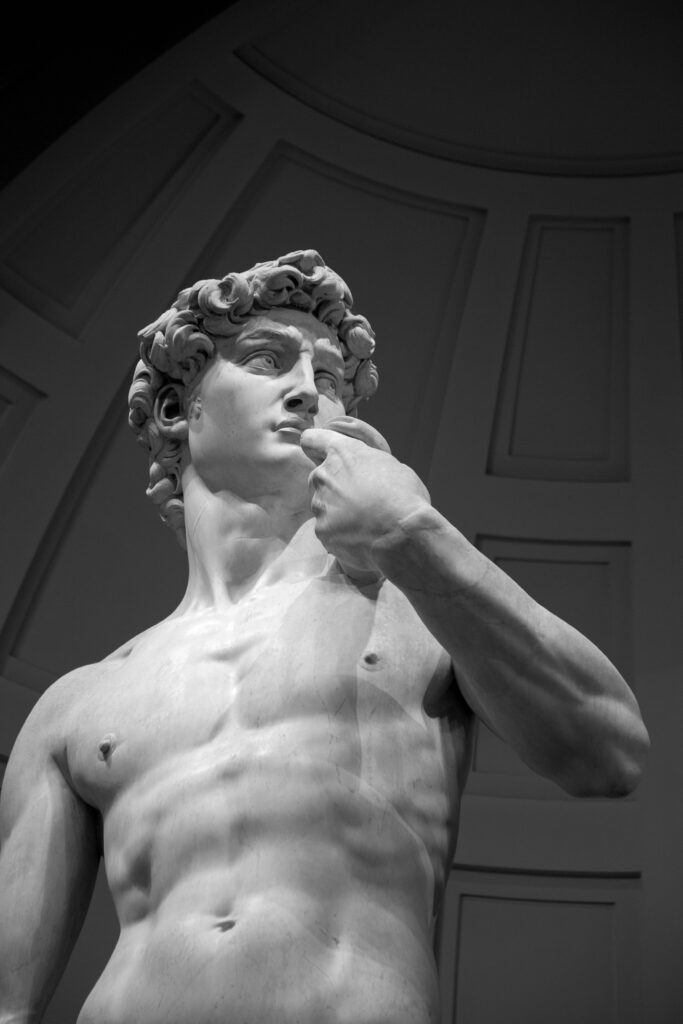
Image courtesy of Unsplash
The Accademia Gallery houses Michelangelo’s David, which is a sculpture that absolutely demands contemplative viewing. In winter, you might share the gallery with dozens rather than hundreds. The experience of seeing David in relative quiet simply isn’t possible during peak season. The gallery also features Michelangelo’s unfinished “Prisoners” sculptures and an excellent collection of Renaissance paintings.
Palazzo Pitti encompasses multiple museums: the Palatine Gallery, Royal Apartments, Gallery of Modern Art, Treasury of the Grand Dukes, and Fashion Museum, plus the Boboli Gardens. The palazzo’s scale means you could easily spend a full day exploring the Medici family’s lavish collections without feeling rushed. Winter also brings Boboli Gardens’ unique charm—while fewer flowers bloom, the architectural elements, sculptures, and panoramic city views become more prominent without summer’s foliage.
Bargello Museum remains underrated despite housing some of Florence’s finest sculptures. Donatello’s bronze David (possibly the Renaissance’s first nude sculpture), Michelangelo’s early works, and masterpieces by Giambologna fill the former prison’s rooms. Winter crowds here verge on nonexistent, offering an almost private museum experience.
Florentine Cuisine in Autumn and Winter
Florence’s culinary identity deepens during cooler months when hearty dishes and seasonal ingredients reach their peak. This is when Tuscan comfort food comes into its own, warming body and spirit after days spent exploring museums and cobblestone streets.
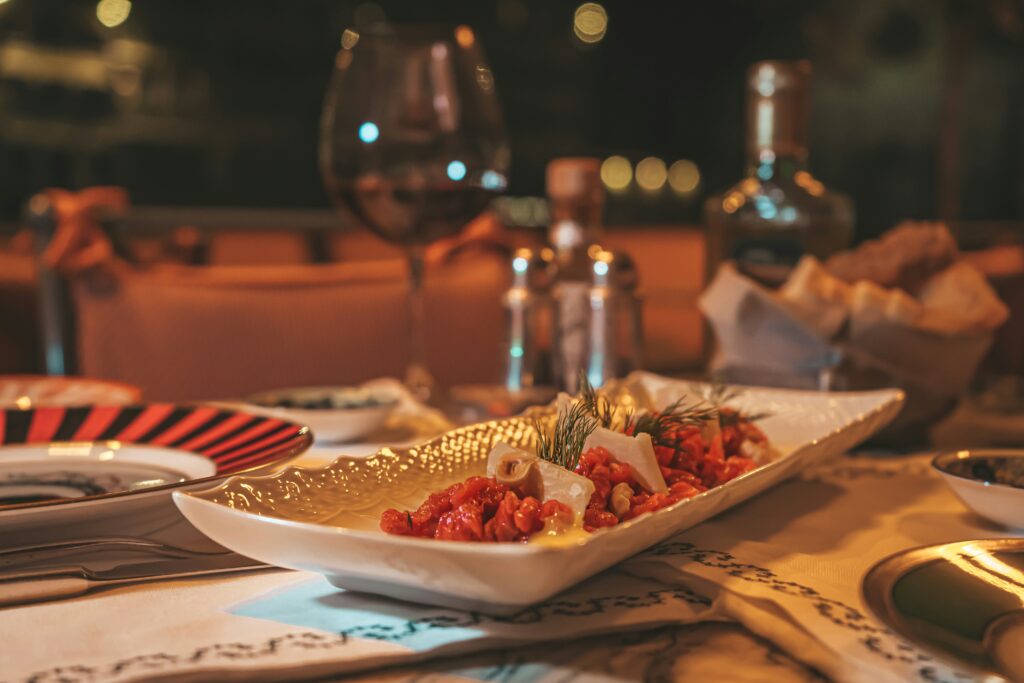
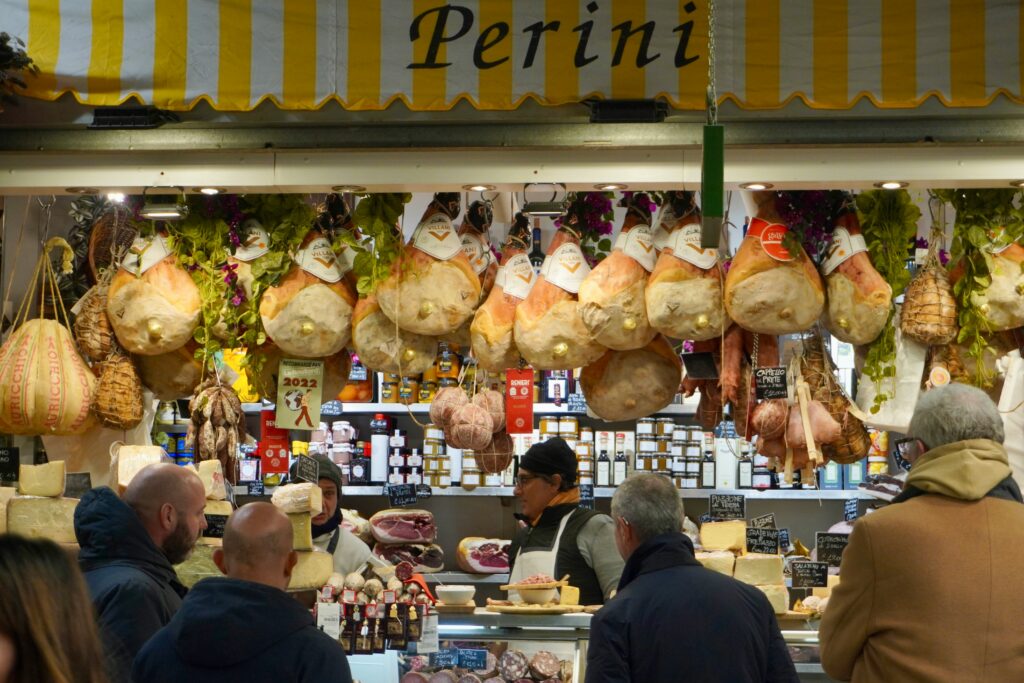
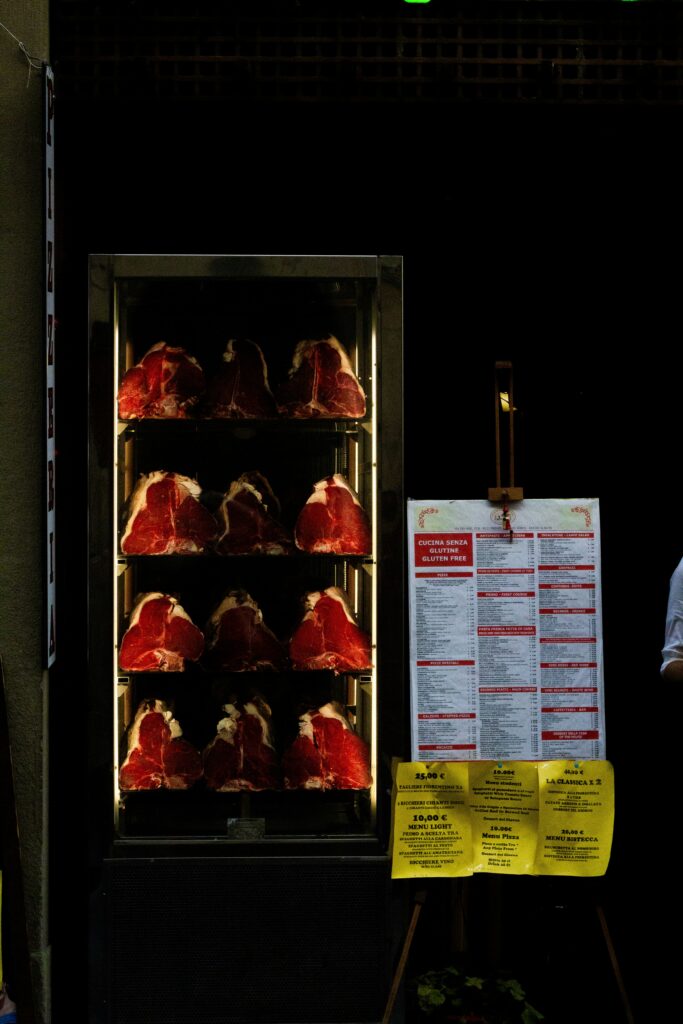
Images from Unsplash
Autumn’s Seasonal Treasures
Porcini Mushrooms
September and October bring porcini mushrooms from Tuscan forests to Florence’s tables. These meaty, aromatic fungi appear on every trattoria menu, prepared simply to showcase their earthy flavor. Classic preparations include porcini trifolati (sautéed with garlic and parsley), pappardelle ai porcini (wide pasta ribbons in a porcini sauce), or simply grilled with a drizzle of olive oil.
Contemporary restaurants elevate the ingredient further. Konnubio creates gnocchi-like preparations with crispy zucca (squash), sage, and porcini that vegetarian diners rave about. The mushrooms’ brief season makes them even more precious—when you see porcini on a menu in October or November, order them.
White Truffles
For those with flexible budgets, white truffles represent autumn’s ultimate luxury. These aromatic tubers from San Miniato command astronomical prices but deliver incomparable flavor. High-end restaurants shave them tableside over fresh pasta, risotto, or scrambled eggs—simple preparations that let the truffle’s perfume dominate.
The season runs from October through December, peaking in November. Even if a full truffle course exceeds your budget, many restaurants offer small tastes or incorporate truffle into more affordable preparations. The experience of that unmistakable aroma of earth, garlic, and a slight funk remains unforgettable.
Chestnuts
By late October, vendors roast chestnuts on street corners throughout Florence, filling the air with their sweet, smoky scent. Paper cones of hot chestnuts cost just a few euros and make perfect hand-warmers while strolling.
Restaurants incorporate chestnuts into both savory and sweet preparations. Castagnaccio, a dense chestnut flour cake studded with rosemary, pine nuts, and raisins, appears on dessert menus.
Olio Nuovo
November brings the olive harvest and olio nuovo, the year’s first pressing of extra virgin olive oil. This vibrant, peppery, almost neon-green elixir hasn’t yet mellowed, delivering an intense flavor that makes conventional olive oil taste bland by comparison.
The traditional preparation is fettunta: grilled Tuscan bread rubbed with garlic and absolutely drenched in olio nuovo. The simplicity highlights the oil’s qualities of a peppery, fruity, pleasant bitterness that catches the back of your throat. Sagre (food festivals) throughout the countryside celebrate olio nuovo, often pairing it with other seasonal specialties.
Winter Comfort Dishes
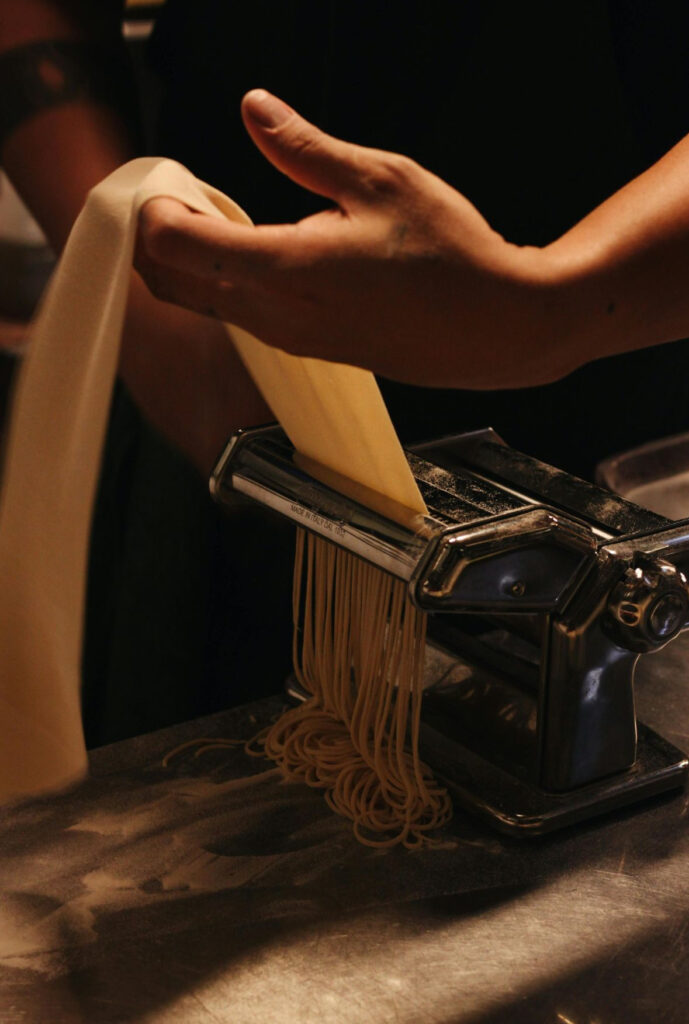
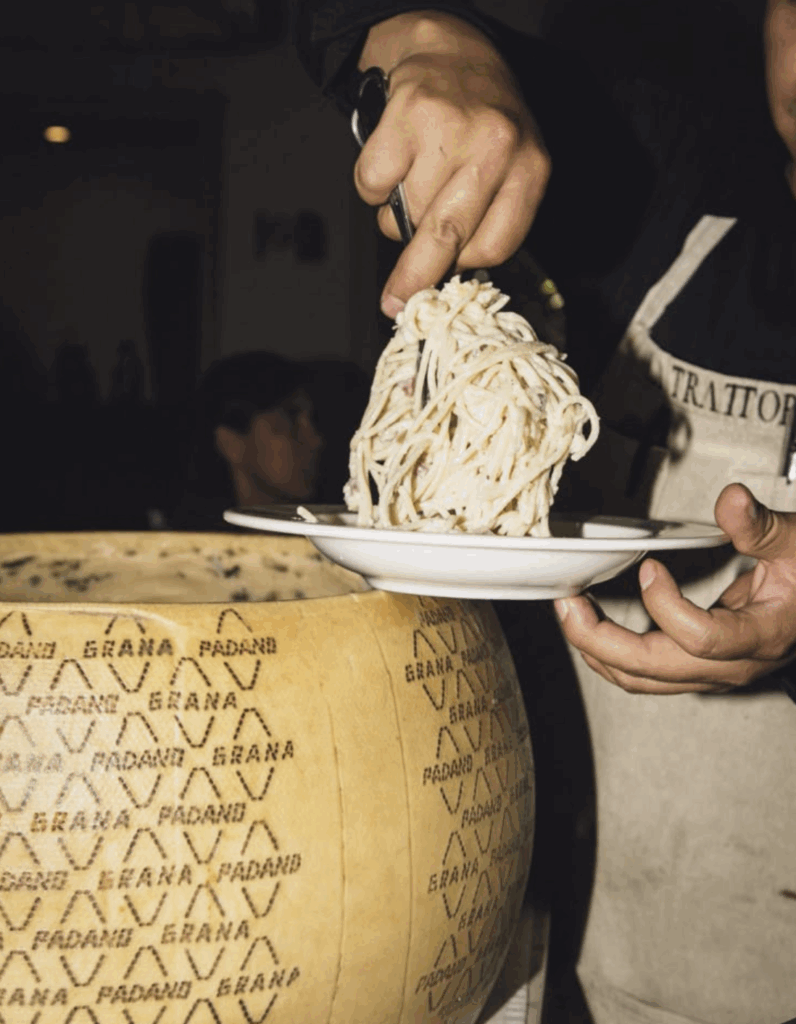
Images courtesy of Grand Hotel Minerva
Ribollita
This thick vegetable soup epitomizes Tuscan peasant cuisine’s genius. The name means “re-boiled,” referencing the tradition of making vegetable soup one day, then reheating it the next with stale bread until everything melds into hearty perfection. Cannellini beans, black kale (cavolo nero), carrots, celery, and tomatoes form the base, but recipes vary by household and restaurant.
The best ribollita is thick enough to eat with a fork, with bread so thoroughly incorporated that it’s inseparable from the vegetables. A drizzle of excellent olive oil on top is mandatory.
On cold, rainy November afternoons, a bowl of ribollita transforms the day. The soup warms from the inside out, and its humble origins of leftovers and stale bread somehow make it taste more comforting.
Pappa al Pomodoro
Another bread-based soup, pappa al pomodoro, combines tomatoes, garlic, basil, and day-old Tuscan bread into silky comfort. The bread dissolves completely, thickening the soup into something between a purée and a porridge (hence pappa, meaning mush or baby food). Despite featuring summer’s tomatoes, Florentines eat it year-round.
The key is quality ingredients: San Marzano tomatoes, excellent olive oil, and proper Tuscan bread (made without salt, with a coarse crumb that absorbs liquid beautifully). Some restaurants serve it at room temperature, others hot, and both have their devotees.
Pappardelle al Cinghiale
Wide, hand-cut pappardelle pasta with wild boar ragù represents winter comfort at its most indulgent. The sauce requires hours of slow cooking, braising the gamey boar meat with tomatoes, herbs, and wine until it falls apart into silky richness. The flavors develop deep, savory complexity that lighter sauces can’t match.
Hunting season for cinghiale (wild boar) runs through winter, making this the ideal time to try it. The meat’s strong flavor isn’t for everyone, but when properly prepared, it’s extraordinary. Many countryside restaurants near Florence feature wild boar prominently since they’re often closer to hunting grounds and receive the freshest meat.
Bistecca alla Fiorentina
While available year-round, this massive T-bone steak feels especially satisfying after cold days exploring museums. True bistecca comes from Chianina cattle—an ancient Tuscan breed producing extraordinarily tender, flavorful beef. The steak is cut thick (at least 3cm), grilled over chestnut wood or charcoal, and served rare to medium-rare.
Traditional preparation involves only salt, pepper, and a post-cooking drizzle of excellent Tuscan olive oil. Requesting well-done will earn you pitying looks or outright refusal. The meat’s quality shines when cooked rare, showing its marbling and tenderness.
Eating bistecca is a commitment! You should arrive hungry, order nothing too filling beforehand, and prepare for a meat-focused feast.
Sweet Traditions
Thick Italian Hot Chocolate becomes essential during cold weather. Unlike American hot cocoa, Italian cioccolata calda is essentially liquid chocolate. Think of a warm cup of chocolate that is thick, smooth, and intensely rich. Rivoire, the historic café on Piazza della Signoria, serves one of Florence’s finest, best enjoyed with a pastry on their terrace (heaters make winter seating comfortable).
Planning Your Autumn or Winter Florence Visit
What to Pack
Layering clothing for fluctuating temperatures is a must. A waterproof jacket proves essential, especially in November. Comfortable, waterproof walking shoes are non-negotiable if you’d like to explore the city on foot. Warmer evening attire for restaurants is a good idea, with a nice jacket to go along. Pack accessories like hats, scarves, and gloves for particularly cold days
Practical Considerations
Shorter Daylight: Winter days end early, with sunset around 5pm in December, so we will plan outdoor activities for morning and early afternoon. Evening hours suit, restaurants, cocktails at the hotel, and indoor cultural events.
Florence in autumn and winter offers what summer cannot: space to breathe, time to savor, and an authentic connection with one of Europe’s most magnificent cities. When you warm your hands around thick Italian hot chocolate in a historic café, stand alone before Botticelli’s Venus, or taste olio nuovo drizzled over grilled bread, you’ll understand why these remain the locals’ favorite seasons, and the months when Florence belongs to those who truly love it.
Ready to experience Florence’s autumn and winter magic? Answer a few question in the inquiry form to begin the process. I specialize in creating authentic experiences that connect you with Italy’s finest foods, seasonal traditions, and hidden experiences.
My clients receive comprehensive destination guides, but I believe great travel inspiration should be shared with everyone. Here you'll find insider tips from my travels, wine region discoveries, and destination highlights that might just inspire your next adventure. Whether you're planning a honeymoon, anniversary trip, or culinary escape, let's explore the world together!
Welcome To My
Home On The Web
A cool, dry wind that flows through France's Rhone Valley towards the Mediterranean Sea. It naturally ventilates vineyards, creating the perfect conditions for exceptional French wines and regional gastronomy.
What is a Mistral Wind?